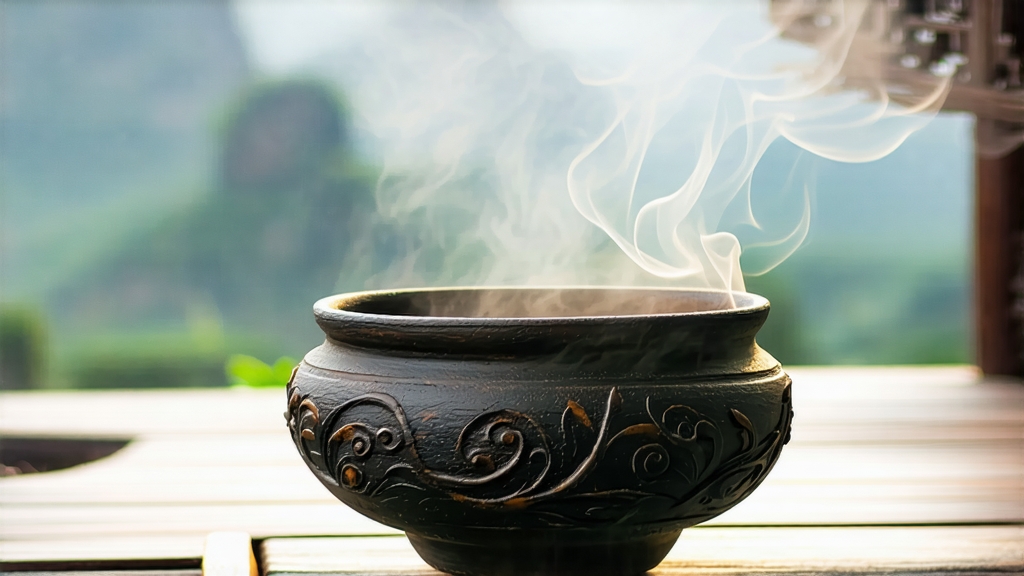
Tucked away in the southern folds of China’s Guangxi Zhuang Autonomous Region, Liu Bao tea has spent four centuries quietly perfecting the art of microbial alchemy. To most outsiders “dark tea” begins and ends with Yunnan’s Pu-erh, yet Liu Bao is the older, subtler sibling that once traveled the legendary Tea-Horse Road, fed porters and emperors alike, and still ferments in woven bamboo baskets whose scent of earth and rainforests clings to every leaf. This article invites the global tea traveler to discover Liu Bao’s history, craftsmanship, and the gentle ritual that coaxes its cocoa-betel soul into a cup.
-
From Frontier Tribute to Maritime Cargo
The name Liu Bao literally means “six fortresses,” a cluster of hamlets in Wuzhou prefecture where Tang-era soldiers once guarded mountain passes. By the late Ming dynasty local growers discovered that a double steam-dry cycle, followed by months in bamboo husks, tamed the bitter green character of indigenous large-leaf assamica. The tea was pressed into 40-kilogram baskets, loaded onto bamboo rafts, and floated down the Liujiang River to the Pearl Delta, where clipper ships carried it to Southeast Asia. In Malaya and Singapore, tin-mine coolies drank Liu Bao to dispel humidity and malaria; Chinese medicine halls sold it as “cooling blood” and easing digestion. So vital was the trade that the 1886 Qing Maritime Customs report lists Liu Bao as Guangxi’s third-largest export by weight, right after rice and cassia bark. -
Terroir: Where Karst Meets Monsoon
The tea gardens sit between 200–600 m on red lateritic soils washed from karst limestone. The climate is subtropical monsoon: 1,600 mm of rain annually, 78 % average humidity, and winter fog that lingers until noon. Such conditions breed a leaf chemistry unusually rich in polysaccharides and methyl salicylate, precursors for the tea’s signature camphor-betel nuance. Old-growth trees—some over 150 years—send roots deep into fissured rock, mining minerals that later translate into a shimmering petrichor finish in the cup. -
Craft: The Secret of “Duī Wēi”
Liu Bao belongs to the “hou fajiao” (post-fermentation) family. After plucking one bud plus three or four leaves, the process departs from green tea orthodoxy:
a. Wilting under sun for 30–40 min until leaf edges curl.
b. Kill-green in a 200 °C drum for 3 min to arrest oxidation, yet leave enzymes latent.
c. Rolling 35 min on a bamboo table to rupture 45 % of cell walls—less than oolong, enough to free sugars.
d. First drying on 80 °C charcoal baskets until 14 % moisture.
e. The critical “Duī Wēi” (wet-pile fermentation): leaves are sprayed with mountain spring water (35 % moisture), heaped 70 cm high, and covered with jute sacks. Thermophilic microbes—Aspergillus niger, Blastobotrys adeninivorans, and a local yeast Kodamaea ohmeri—drive the pile to 55 °C within 36 h. Every two days the pile is turned, aerated, and re-sprayed; the cycle lasts 25–30 days. Masters judge readiness by scent: it must shift from compost to dried longan with a hint of star anise.
f. Post-fermentation drying on low charcoal heat to 10 % moisture.
g. Finally the tea is packed into cylindrical bamboo baskets lined with banana leaves; a tiny air hole at the top allows micro-oxygenation to continue for decades.
- Grades & Aging Curves
Liu Bao is graded by leaf maturity and basket weight:- First grade: golden tips constituting 30 %, pressed into 20 kg “tea dragon” baskets.
- Third grade: balanced mix, 35 kg baskets, the everyday standard.
- Fifth grade: larger stems, 50 kg, destined for long boiling in Hong Kong teahouses.
A 1990s study by the Guangxi Tea Science Institute tracked microbial populations over 30 years. Thearubigins peak at year 8,